About Us
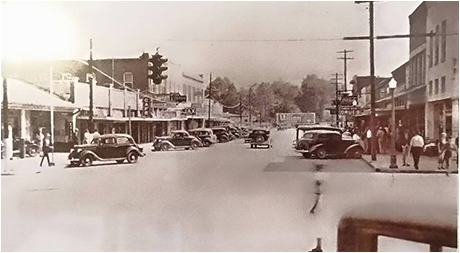 The first efforts to establish a town on the west bank of the river opposite Monroe began in 1837 when John Campbell submitted a plan for a town named Byron to the Ouachita Parish
Police Jury. On his plat, he laid out 10 lots and several streets. His general store was located on lot 3 on Front Street, directly in front of the ferry landing. Although business
was good, his heavy debt forced his bankruptcy in 1838 and the town of Bryon died with the demise of his business. In 1854, this same property fell into the hands of Dr. Christopher
Dabbs, a Virginia born doctor who practiced in Trenton and lived in Monroe. He revived the plans for a town and advertised the sale of lots in the August issue of the Ouachita
Register, naming the town Cotton Port. His plans did not materialize and in desperation, Dr. Dabbs sold all but a few lots of the town to Ms. Thankful Hall Bry, Henry Slaughter and
Joseph P. Crosley, a leading merchant in nearby Trenton, in 1858. In March 1859, Cotton Port's existence was recognized by the Louisiana Legislature enabling the parish recorder to
name a deputy for the town. In its infancy, Cotton Port consisted of one saloon, one grocery merchant and one sawmill, the latter employed mainly in cutting ties for the railroad, and
numbered only about 100 people.
The first efforts to establish a town on the west bank of the river opposite Monroe began in 1837 when John Campbell submitted a plan for a town named Byron to the Ouachita Parish
Police Jury. On his plat, he laid out 10 lots and several streets. His general store was located on lot 3 on Front Street, directly in front of the ferry landing. Although business
was good, his heavy debt forced his bankruptcy in 1838 and the town of Bryon died with the demise of his business. In 1854, this same property fell into the hands of Dr. Christopher
Dabbs, a Virginia born doctor who practiced in Trenton and lived in Monroe. He revived the plans for a town and advertised the sale of lots in the August issue of the Ouachita
Register, naming the town Cotton Port. His plans did not materialize and in desperation, Dr. Dabbs sold all but a few lots of the town to Ms. Thankful Hall Bry, Henry Slaughter and
Joseph P. Crosley, a leading merchant in nearby Trenton, in 1858. In March 1859, Cotton Port's existence was recognized by the Louisiana Legislature enabling the parish recorder to
name a deputy for the town. In its infancy, Cotton Port consisted of one saloon, one grocery merchant and one sawmill, the latter employed mainly in cutting ties for the railroad, and
numbered only about 100 people.
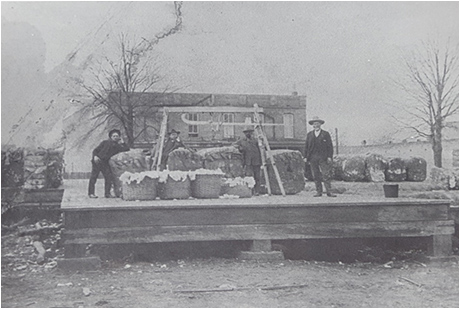 In 1882, the Vicksburg, Shreveport, & Texas Railroad constructed a rail bridge across the Ouachita River transforming this small community into a bustling town as it became the main
point for shipping cotton and livestock from farms on the west side of the river. Easy access to the railroad attracted industry and within a few years Cotton Port had a planning mill,
a cottonseed oil mill and an ice factory. Sawmills were among the earliest industries. Fred Vollman established the Ouachita Excelsior Steam Saw and Planing Mill in the 500 Block of
Trenton Street in the early 1880's and his mill supplied wooden ties for the construction of the railroad. Along with the extension of the main railroad, a spur line was completed in
the late 1800's connecting businesses and industries along the Ouachita River. John E. Morris established a cotton yard where he weighed and stored farmer's cotton before shipping it
by rail. The cotton yard remained in operation until Morris' death in 1914.
In 1882, the Vicksburg, Shreveport, & Texas Railroad constructed a rail bridge across the Ouachita River transforming this small community into a bustling town as it became the main
point for shipping cotton and livestock from farms on the west side of the river. Easy access to the railroad attracted industry and within a few years Cotton Port had a planning mill,
a cottonseed oil mill and an ice factory. Sawmills were among the earliest industries. Fred Vollman established the Ouachita Excelsior Steam Saw and Planing Mill in the 500 Block of
Trenton Street in the early 1880's and his mill supplied wooden ties for the construction of the railroad. Along with the extension of the main railroad, a spur line was completed in
the late 1800's connecting businesses and industries along the Ouachita River. John E. Morris established a cotton yard where he weighed and stored farmer's cotton before shipping it
by rail. The cotton yard remained in operation until Morris' death in 1914.
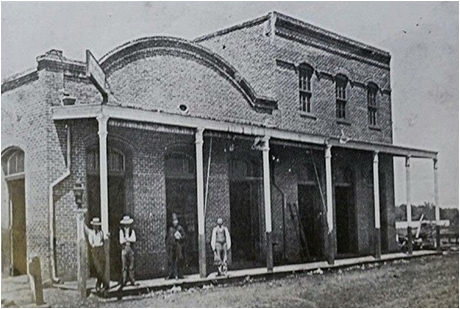 After almost 30 years the city fathers were ready for full town status. They applied to the United States Post Office for a local office, only to encounter a serious problem with
their town name. Ten years earlier a small hamlet in Avoyelles parish had been registered by the name of Cotton Port. In November 1883, the town name was changed to West Monroe. The
railroad truly helped develop West Monroe, but it met serious competition from the steamboat traffic. The especially shallow draft steamboats that plied local bayous still found West
Monroe an excellent place to take on and discharge cargo. The terrain was good for easy landings but the many months of low water left some of the heavier boats stranded on unnatural
wharfs of sand. The railroad was unaffected by seasonal changes and offered a greater opportunity of commerce to help build the town of West Monroe. Some merchants and tradesmen from
nearby Trenton, located a little over a mile upriver moved their businesses to be closer to the railroad.
After almost 30 years the city fathers were ready for full town status. They applied to the United States Post Office for a local office, only to encounter a serious problem with
their town name. Ten years earlier a small hamlet in Avoyelles parish had been registered by the name of Cotton Port. In November 1883, the town name was changed to West Monroe. The
railroad truly helped develop West Monroe, but it met serious competition from the steamboat traffic. The especially shallow draft steamboats that plied local bayous still found West
Monroe an excellent place to take on and discharge cargo. The terrain was good for easy landings but the many months of low water left some of the heavier boats stranded on unnatural
wharfs of sand. The railroad was unaffected by seasonal changes and offered a greater opportunity of commerce to help build the town of West Monroe. Some merchants and tradesmen from
nearby Trenton, located a little over a mile upriver moved their businesses to be closer to the railroad.
In 1884, Lemuel D. McLain constructed Building No. 1 for the cottonseed oil mill, originally a one story building, it was raised to two stories in 1926. Known for most of its history as the Union Oil Mill, the factory became one of the largest cottonseed mills in the state. At its height it occupied more than two-city blocks and employed around 100 people for eight or nine months of the year, operating around the clock. Today the building houses a restaurant, Mercantile Store, offices and apartments.
 In 1885 Uriah Millsaps constructed the first commercial building in West Monroe at the corner of Commerce and Natchitoches Streets. In the early years most of the businesses faced
Commerce Street and the railroad tracks that ran along the riverfront. Business boomed and by 1890 he added the two-story building next door. Uriah Millsaps stayed in business for
more than 50 years.
In 1885 Uriah Millsaps constructed the first commercial building in West Monroe at the corner of Commerce and Natchitoches Streets. In the early years most of the businesses faced
Commerce Street and the railroad tracks that ran along the riverfront. Business boomed and by 1890 he added the two-story building next door. Uriah Millsaps stayed in business for
more than 50 years.
In 1886, the Methodist congregation in Trenton moved their church to North 2nd Street. The current brick building, which is listed in the National Register of Historic Places, was constructed in 1920 to replace the earlier frame structure. Described as "palatial" in local newspapers at the time the imposing two-story building is constructed in the Colonial Revival style. The interior of the sanctuary features paneled wainscoting and a balcony.
In the early 1890's, several houses rented by African Americans were located at the corner of Cotton and Pine Streets. African Americans continued to live here until the mid-20th century. Residents Robert and Ollie Stevenson opened a dry cleaner business on Cotton Street in the early 1930s. Lemmie Johnson took over the cleaning business in the mid-1930s and ran it until the late 1940s or early 1950s when the buildings in this area were demolished.
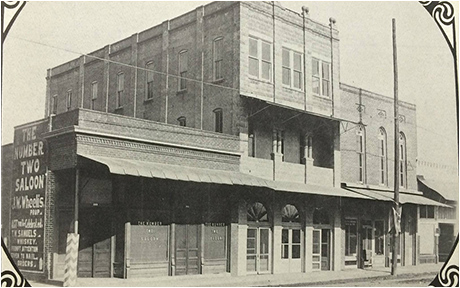 Around 1895, William R. Mitchell left his general store in the small town of Cadeville to establish a larger store on Trenton Street in West Monroe. The shop windows and cast iron
columns remain much as they did in the early 1900s, though Mitchell's original storefront extended to the corner of Trenton and Natchitoches Streets. In addition to running the store,
Mitchell was a dedicated member of the Ouachita Parish School District. After Mitchell's death in 1927 his longtime business partner, E. Douglas Cason and his son, William L. Mitchell
carried on the business for nearly a decade before closing it during the great Depression of the 1930s. The corner section of the building was remodeled for use as a bank not long
after W.R. Mitchell & Co. closed.
Around 1895, William R. Mitchell left his general store in the small town of Cadeville to establish a larger store on Trenton Street in West Monroe. The shop windows and cast iron
columns remain much as they did in the early 1900s, though Mitchell's original storefront extended to the corner of Trenton and Natchitoches Streets. In addition to running the store,
Mitchell was a dedicated member of the Ouachita Parish School District. After Mitchell's death in 1927 his longtime business partner, E. Douglas Cason and his son, William L. Mitchell
carried on the business for nearly a decade before closing it during the great Depression of the 1930s. The corner section of the building was remodeled for use as a bank not long
after W.R. Mitchell & Co. closed.
After working for his uncle, local merchant Uriah Millsaps, for more than fifteen years, Lucien N. Larche opened his own dry goods store in 1902. He built the current structure located at 312 Trenton Street sometime before 1909. (slide 15) The cast-iron storefront was manufactured by J.G. Sanders Foundry and Machine Shop of Monroe and the decorative brick cornice is typical of early 20th-century commercial architecture. His brother-in-law James G. Tidwell, joined the business in the 1910s, and took over after Larche's death in 1935.
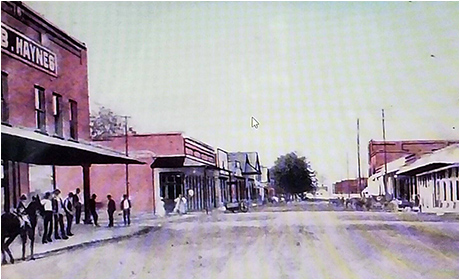 From the early 1900s until his death in 1914, William J. Webb operated a restaurant on the first floor and provided lodging on the second and third floors of the building located at
318 Trenton Street. When it was constructed in the first decade of the 20th century, this building stood three stories tall, and had a second story front porch. The rusticated stone
blocks and arched openings are typical of the Romanesque Revival style and is the only example of this style in downtown West Monroe. Rooms in the upper stories were available for rent
through the 1950s. After a fire destroyed the third floor in the late 20th century, the second floor was converted for use as a bed and breakfast. The building closed for a brief
period from 2009-2011 for extensive renovations. There are currently five rooms available for rent along with an event space located on the first floor.
From the early 1900s until his death in 1914, William J. Webb operated a restaurant on the first floor and provided lodging on the second and third floors of the building located at
318 Trenton Street. When it was constructed in the first decade of the 20th century, this building stood three stories tall, and had a second story front porch. The rusticated stone
blocks and arched openings are typical of the Romanesque Revival style and is the only example of this style in downtown West Monroe. Rooms in the upper stories were available for rent
through the 1950s. After a fire destroyed the third floor in the late 20th century, the second floor was converted for use as a bed and breakfast. The building closed for a brief
period from 2009-2011 for extensive renovations. There are currently five rooms available for rent along with an event space located on the first floor.
The large corner building located at Trenton and Natchitoches Streets was a landmark in West Monroe's commercial district for much of the 20th century. In the late 1880s Green B. Haynes moved to West Monroe to establish a general store and constructed this large corner property in 1904. In the 1910s, the building was divided to house several businesses. The West Monroe State Bank occupied the corner location from 1919 until the bank failed in 1936, in the midst of the Great Depression. In 1937, the Hatchell brothers, who operated several general stores in north Louisiana remodeled the building and opened a department store. The 13,500 square foot Hatchell's Department Store stretched nearly a whole block on Natchitoches Street, and claimed to have one of the largest glass window displays in northeast Louisiana. In addition to a wide selection of ready-made clothing, work clothes, fabrics, kitchen supplies and linens. Hatchell's included a food market on the Cotton Street end of the building. Today it houses several retail specialty shops.
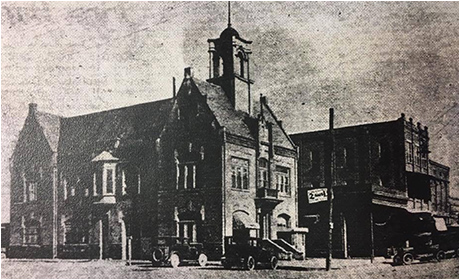 Around 1905, the center of downtown gradually shifted to the intersection of Trenton and Natchitoches Streets and Uriah Millsaps expanded his general store on Commerce Street and
built a new storefront that faced Trenton Street which had cast iron columns and display windows that wrapped around the corner to Natchitoches Street. The Millsaps Company remained in
this location until the late 1920's, when World War I veteran Joe Durrett opened a hardware and furniture store. By 1926 Durrett owned three stores in West Monroe and Monroe. The
Coca-Cola mural on the Natchitoches Street side of the building was originally painted in the late 1940s or early 1950s and was refurbished in 2016.
Around 1905, the center of downtown gradually shifted to the intersection of Trenton and Natchitoches Streets and Uriah Millsaps expanded his general store on Commerce Street and
built a new storefront that faced Trenton Street which had cast iron columns and display windows that wrapped around the corner to Natchitoches Street. The Millsaps Company remained in
this location until the late 1920's, when World War I veteran Joe Durrett opened a hardware and furniture store. By 1926 Durrett owned three stores in West Monroe and Monroe. The
Coca-Cola mural on the Natchitoches Street side of the building was originally painted in the late 1940s or early 1950s and was refurbished in 2016.
The brick tower located at the parking lot at Trenton and Pine Streets shelters the original bell from West Monroe's first city hall. Built in 1907 the jail and fire department were located on the first floor of the building, while a large city council chamber occupied much of the second floor. The brick building was designed in the Chateauesque style by William Drago, who was born in nearby Trenton in 1870. Drago had no formal education in architecture, but went on to design numerous buildings in Louisiana and Mississippi and had offices in Monroe and New Orleans. The city hall closed at this location in 1949 and the building was destroyed by fire in 1964.
In 1909 Godwin C. "Doc" Moore opened a barber shop and the Exchange Saloon in the 100 block of Commerce Street. Metal letters set in the concrete in front of the building mark the location of the saloon. After the sale of alcoholic beverages was outlawed in 1920, Moore's son George converted the saloon into a pool hall. Starting in the mid-1930s the Carolina Hotel occupied the second floor of the building. In its first twenty years the hotel typically rented rooms to young couples and unmarried workers, and charged weekly rates of two or three dollars. The Carolina Hotel closed in the 1960s.
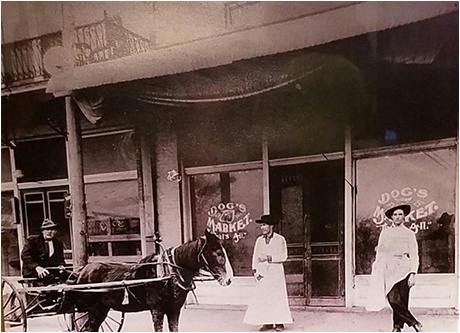 The properties at 205 and 207 Trenton Streets were built between 1909 and 1913 and have well-preserved storefronts with pressed tin ceilings above the entrances. The first tenant of
205 Trenton Street was the City Drug Company. In 1923, Henry Jarrell and George Sanford purchased the City Drug Company and their names remain in the tile flooring in front of the
entrance. In addition to filling prescriptions and selling medicines and health-related products Jarrell and Sanford operated a soda fountain. The adjacent building at 207 Trenton
Street housed various stores until 1933, when Thomas Painich opened a bar shortly after prohibition ended and the sale of alcoholic beverages became legal again. The Painich family
continued to operate the bar through the 1970s.
The properties at 205 and 207 Trenton Streets were built between 1909 and 1913 and have well-preserved storefronts with pressed tin ceilings above the entrances. The first tenant of
205 Trenton Street was the City Drug Company. In 1923, Henry Jarrell and George Sanford purchased the City Drug Company and their names remain in the tile flooring in front of the
entrance. In addition to filling prescriptions and selling medicines and health-related products Jarrell and Sanford operated a soda fountain. The adjacent building at 207 Trenton
Street housed various stores until 1933, when Thomas Painich opened a bar shortly after prohibition ended and the sale of alcoholic beverages became legal again. The Painich family
continued to operate the bar through the 1970s.
The roaring 1920's brought many new merchants to the downtown area. Located at 101 Wood Street, The Exchange Café, a restaurant and bar operated by Delia (Harris) Myles, opened at this site in 1920 and continued in operation until around 1957. The present building (behind the sea wall) was constructed around 1950.k The café, as well as the barber ship that was located here in the 1920s and 1930s were among the many West Monroe businesses operated by African Americans during the era of racial segregation. From the late 1800s until the 1960s, segregation laws and local custom forbade African Americans from operating businesses along the main downtown streets. As a result, they located their businesses on the edges of downtown or within African American neighborhoods.
 Wholesale Grocer Frank Varino built the property located at 125 Commerce Street. Originally constructed as a refrigerated warehouse in 1920-1921 for use in his wholesale grocery
business, the property changed in 1927 when the Ouachita Nehi Bottling Company established a bottling plant here. Using syrups shipped from Nehi headquarters in Georgia and local
sugar, the company produced Nehi sodas and Royal Crown Cola. In 1938 the plant could produce 24,000 bottles per day. The bottling plant was moved to a new location in West Monroe in
1945. Frank Varino Company, Inc. also constructed the building located at 200 Commerce Street in the late 1920s to house its growing wholesale grocery business. Groceries and tobacco
products were unloaded from rail cars on the spur line that passed directly in front of the loading platform at the front of the building. Trucks then distributed the products to
grocery stores and restaurants within a 50-100 mile radius of West Monroe. The Varino sons carried on the business but moved the company's offices to the former Webb Hotel after their
father's death in 1953.
Wholesale Grocer Frank Varino built the property located at 125 Commerce Street. Originally constructed as a refrigerated warehouse in 1920-1921 for use in his wholesale grocery
business, the property changed in 1927 when the Ouachita Nehi Bottling Company established a bottling plant here. Using syrups shipped from Nehi headquarters in Georgia and local
sugar, the company produced Nehi sodas and Royal Crown Cola. In 1938 the plant could produce 24,000 bottles per day. The bottling plant was moved to a new location in West Monroe in
1945. Frank Varino Company, Inc. also constructed the building located at 200 Commerce Street in the late 1920s to house its growing wholesale grocery business. Groceries and tobacco
products were unloaded from rail cars on the spur line that passed directly in front of the loading platform at the front of the building. Trucks then distributed the products to
grocery stores and restaurants within a 50-100 mile radius of West Monroe. The Varino sons carried on the business but moved the company's offices to the former Webb Hotel after their
father's death in 1953.
In the 1920s, the first movie theater opened in West Monroe called Crystal Theater. After a fire gutted the movie theater in 1928, W.J. Mills remodeled the building as the new location for his grocery store, which had been in operation in another location since before 1910. The Coca-Cola mural on the Pine Street side of the building was likely painted when L.C. Leake operated a grocery store here. The mural features Sprite Boy, a character that appeared in Coca-Cola advertising in the 1940s and 1950s.
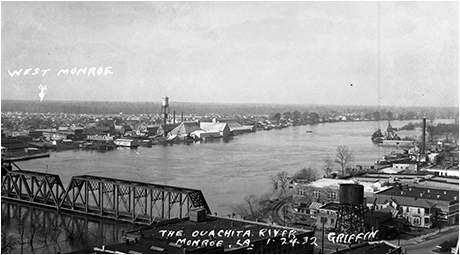 The brick building located at 401-405 Natchitoches Street was constructed in the 1920s, a few years after Natchitoches Street was paved. The corner storefront, which initially
housed a grocery store, served as the city's post office from 1938 to 1948. Morrison & Heacock Garage was located in the center section of the building, and the West Side Printing
Company occupied the west storefront. The West Side Printing Company published the Ouachita Citizen, which has been West Monroe's newspaper since 1924.
The brick building located at 401-405 Natchitoches Street was constructed in the 1920s, a few years after Natchitoches Street was paved. The corner storefront, which initially
housed a grocery store, served as the city's post office from 1938 to 1948. Morrison & Heacock Garage was located in the center section of the building, and the West Side Printing
Company occupied the west storefront. The West Side Printing Company published the Ouachita Citizen, which has been West Monroe's newspaper since 1924.
The building located at the foot of the Endom bridge was built in 1921 and operated as a meat or fish market for more than fifty years. In 1925, the proprietor, Pike Neal, got into a fight with a local hotel owner over unpaid debts, leading to a stand-off with police that drew a crowd large enough to block traffic on the bridge. Homer Anderson ran the fish market from the late 1930s until the mid-1940s, when Albert J. Bayles took over the business. Bayles Fish Market remained in operation through the 1970s.
When Captain H. M. Williams and Timothy Newell, the former owner of the Crystal Theater, opened the Happy Hour Theater in the building at 111 Cotton Street, in 1929 it was the first movie theater in West Monroe to show motion pictures with sound. In 1932, the theater was re-named The Strand and joined Joseph M. Heard's chain of movie theaters. Originally built with 195 seats, the theater expanded in the 1940s to seat over 500 moviegoers. In 1930, Roland Siegle opened a movie theater on Trenton Street but closed the theater in 1932 and went bankrupt the following year. The 450-seat theater reopened in 1934 as the Rialto, and later became part of a small chain of movie theaters operated by West Monroe resident Joseph M. Heard. Like other movie theaters in Louisiana, the Rialto was racially segregated until the mid-1960s. Only whites were permitted to enter through the main lobby and sit in the seats on the main floor of the theater. African Americans were required to enter via the side door that led directly to the balcony. The ticket booth, which remains inside the building, has separate windows for the main lobby and the side stair to the balcony.
In the winter of 1932, West Monroe experienced one of the worst floods in its history. Large areas of the city were evacuated as water filled streets and homes. In the aftermath of the flood, Mayor C.C. Bell and former state senator T.L. Hood worked to secure adequate and lasting flood protection for the city. As a result of their efforts, the federal government funded the construction of the concrete seawall along Trenton Street, as well as a levee to the south of the city. The mural on the seawall features designs by local schoolchildren and was completed in 2015.
In 1949, the Freemasons constructed the Masonic Lodge Building which has a retail space on the first floor and lodge rooms on the second floor. The entrance to the second-floor lodge is at the back of the building and has a nearly identical façade. The Freemasons of West Monroe organized Lodge #419 for the Free and Accepted Masons in 1926. Also in 1949, West Monroe's second City Hall was erected at the corner of Natchitoches and Cypress streets. The three-story building was built to replace the cramped and aging 1907 city hall which served approximately 1000 residents when first constructed. By the time of completion of the second City Hall the local government was responsible for a population of nearly 10,000. Designed by Monroe architects Smith, Padgett and Stubbs, the building housed offices on the first and second floors, while the jail was located on the third floor.
One of the newest structures in the Historic District was built in 1953 by local contractor Jesse Heard for the newly formed First National Bank of West Monroe is located at 311 Natchitoches Street. The building is an excellent example of mid-20th century modern architecture. The First National Bank prospered, and just six years later, it moved to a new, larger building a few blocks away. The Ouachita Federal Savings Loan Association occupied the building from 1959-1975.
In 1987 a group of six antique dealers formed the Antique Alley Merchant's Association. In an effort to revive downtown shopping, enhance the appearance and restore the original character of the historic downtown, they began pooling their money to pay for billboards to advertise their stores and downtown West Monroe on interstate highways. As businesses continued to return downtown, more marketing efforts were available to the group and they began to publish marketing brochures to distribute state wide. These efforts have made Antique Alley a tourist destination known around the United States. Today you may find more boutiques than antiques however our selection of shops allows you to find items from past and present, from Europe to America, children's clothing to ladies apparel, housewares to gourmet spices, and handmade crafts to custom jewelry. We invite you to spend the day shopping, dining, exploring, or walking through history.
This information was compiled from the following sources:
West Monroe Historic Preservation Study Committee Project, 1992 Calendar Forward; History Credits: From research by E.Russ Williams, Dept. of History, NLU, as published in the Ouachita
Citizen; and by a staff correspondent for the New Orleans Times-Democrat on a steamer trip to Northeast Louisiana in 1853. Edited by Libby Goodwin.
Historic Cotton Port "Come Walk with Us" Brochure; Brochure text prepared by Evelyn D. Causey. Some photos from this brochure were provided by photographer Staci Albritton Mitchell. For more information: www.DowntownWestMonroe.org.